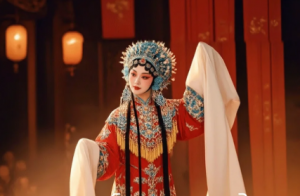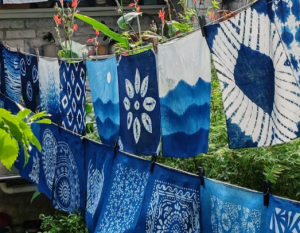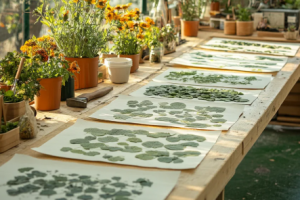When the curtain rises on a traditional Chinese opera stage, the audience is transported into a world where every visual element tells a story. The elaborate costumes, magnificent headdresses, and exquisitely crafted props are not mere accessories—they are an integral part of China’s intangible cultural heritage, representing centuries of artistic evolution and symbolic communication.
Historical Evolution: From Ritual to Performance
The history of Chinese opera costumes, known as juzhuang (剧装), dates back over a thousand years, with its origins deeply rooted in ancient Chinese ceremonial traditions.
-
Tang and Song Dynasties (618-1279): The Foundations
During the Tang Dynasty, performing arts began to formalize, with early prototypes of costume design emerging in court performances. The Song Dynasty saw the establishment of permanent theaters in cities like Kaifeng and Hangzhou, where standardized costume conventions started to develop. Performers began using color-coded garments to indicate character types, laying the groundwork for the sophisticated system that would follow. -
Ming and Qing Dynasties (1368-1912): The Golden Age
The Kunqu opera tradition of the Ming Dynasty refined costume art to unprecedented levels, with exquisite embroidery and symbolic colors becoming standardized. The Qing Dynasty, particularly during the reign of Emperor Qianlong, witnessed the peak of this art form as Beijing opera emerged and synthesized various regional styles. The imperial court established workshops specifically for creating opera costumes, employing the finest craftspeople and materials.
The Language of Attire: Symbolism and Craftsmanship
Traditional Chinese opera costumes form a complex visual language where every element carries specific meaning.
Color Symbolism:
-
Yellow: Reserved exclusively for imperial characters, symbolizing supreme power
-
Red: Represents loyalty, courage, and uprightness
-
Black: Indicates integrity, straightforwardness, and sometimes roughness
-
White: Signifies cunning, treachery, or military prowess
-
Blue and Green: Often used for rebellious heroes or supernatural beings
Embroidery Patterns:
-
Dragons: Imperial authority and power
-
Phoenixes: Empress and imperial consorts
-
Clouds: Good fortune and celestial connections
-
Water Patterns: Flexibility and strategic thinking
-
Tigers: Military prowess and courage
The creation of a complete opera costume involves multiple specialized craftspeople—from designers and embroiderers to metalworkers creating the elaborate headdresses. A single costume for a principal character might require several months of work and feature hand-embroidered designs using gold and silver threads.
Regional Diversity: A Tapestry of Styles
China’s vast geographical and cultural diversity has given rise to distinct opera costume traditions:
-
Peking Opera: Known for its bold colors and exaggerated designs, particularly the elaborate facial makeup that has become iconic worldwide
-
Kunqu Opera: Features more subtle, elegant costumes reflecting its scholarly origins
-
Yue Opera: Characterized by delicate, flowing costumes with intricate embroidery
-
Sichuan Opera: Famous for its quick-change techniques and corresponding costume innovations
The Artisans’ Legacy: Techniques and Training
The making of traditional opera costumes involves numerous specialized techniques passed down through generations:
-
Embroidery: Using techniques like Beijing embroidery and Suzhou embroidery, artisans create raised patterns with silk and metallic threads
-
Metalwork: Crafting elaborate headdresses from copper, silver, and semi-precious stones
-
Fabric Dyeing: Employing traditional vegetable dyes and techniques to achieve specific color shades
-
Paper Craft: Creating intricate prop items from specialized papers
Master artisans typically begin their training in their teens, requiring at least a decade to achieve proficiency. The knowledge is traditionally transmitted through apprenticeship systems, with masters teaching disciples both technical skills and the cultural significance behind each design element.
Modern Challenges and Renaissance
The 20th century brought significant challenges to traditional opera costume art, including political upheavals and changing entertainment preferences. Many workshops closed, and master artisans found themselves without successors for their skills.
However, the 21st century has witnessed a remarkable revival:
-
Cultural Recognition: Opera costume craftsmanship has been designated as intangible cultural heritage at various levels, with key preservation centers established in Beijing, Suzhou, and Shanghai
-
Contemporary Innovation: Designers are incorporating traditional elements into modern fashion and theater productions, creating new audiences for this ancient art form
-
Educational Programs: Vocational schools and universities have begun offering courses in traditional costume arts, ensuring knowledge transmission to younger generations
-
Global Appreciation: International exhibitions and collaborations with Western theater companies have brought global recognition to Chinese opera costume art
Beyond the Stage: Cultural Significance
Traditional opera costumes represent more than theatrical props—they are a浓缩 (concentrated) expression of Chinese aesthetics, philosophy, and craftsmanship. They embody the Chinese concept of “艺术来源于生活,高于生活” (art originates from life but transcends it), transforming everyday realities into symbolic representations.
The vibrant colors, intricate patterns, and dramatic silhouettes continue to inspire contemporary designers across various fields, from haute couture to cinema, proving the enduring relevance of this ancient art form.
As one master costume artisan noted, “We are not just making clothes for performers—we are creating wearable poetry that speaks across centuries.” In preserving this living heritage, we maintain a vital connection to China’s cultural soul, ensuring that the magnificent spectacle of traditional opera continues to captivate audiences for generations to come.
猜你喜欢
发表评论
电子邮件地址不会被公开。 必填项已用*标注






